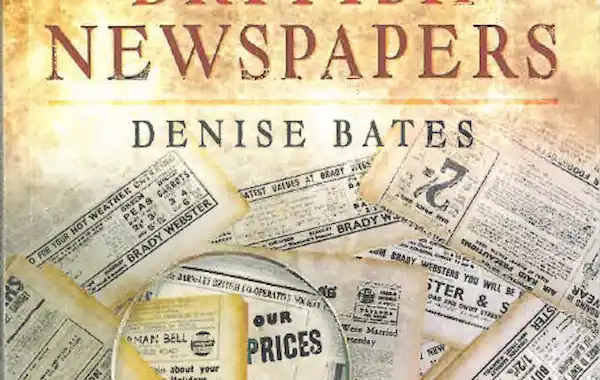28 July 2016
|
Learn how to use newspapers for family history research with this new book by Denise Bates
I think it’s fair to say the digitisation of historical British newspapers (and elsewhere) in recent years has been a quiet revolution in family history. Various projects have been trundling along in the background, with more and more titles going online, giving many researchers the chance for the first time to delve inquisitively – even joyfully – into the lives of their ancestors who appeared in print, whether for good or for bad.
As an ex-newspaper journalist, I’m pretty nosy (I expect that’s a prerequisite for most of us studying our family histories!) so have relished the opportunity to idle away a few hours on websites such as the British Newspaper Archive and Australian Trove newspapers. There are a wealth of wonderful stories buried in them and they don’t even have to be my ancestors to get me hooked; simply soaking up the social, economic and political history of their time can be truly eye-opening, and help to put their lives in context.
So it’s great news that historian and writer Denise Bates, who used old newspapers extensively when researching her first two books (both featured on these pages), Pit Lasses and Breach of Promise to Marry, has shared her knowledge – and her enthusiasm – for these rich resources in her latest publication. Drawing on her own experiences of using online newspaper archives spanning three centuries of ‘unwieldy’ source material, Historical Research Using British Newspapers is packed with useful background information, practical advice and ideas for innovative approaches to get the best out of the archives. With the first chapter giving a brief history of newspapers in Britain – from the founding of the London Gazette (then the Oxford Gazette) in 1665 – we learn that it’s well worth educating yourself on what titles are available online, how the media industry operated in the past, what types of material can (and can’t) be found in newspapers and just how we can ‘locate and evaluate relevant information and draw out informed, evidence-based conclusions’.
This is a methodical guide, offering plenty of bite-size advice on avoiding pitfalls in your research; such as inaccuracies (check for other reports to corroborate evidence) or drawing false conclusions by misunderstanding the context. Other hurdles to watch out for can include the journalist, editor’s or interviewees’ bias, or even cultural bias (which, of course, we are not immune to today).
There many more useful research tips here, including how to best record your historical findings using spreadsheets, and analysing your data, with helpful case studies and lists of useful websites. Whether you’re a seasoned researcher or dipping your toe into old newspapers for the first time, there is lots of valuable information here to help you on your research journey.
With the sad decline in local newspapers that we see today, I feel for future family historians without the colourful reports (and photographs) of cheque presentations, school fetes, minor scrapes, agricultural shows, BMD notices and magistrates’ court hearings that were the bread and butter of my reporting days. These are the clues that can help to fill in the gaps in our knowledge about people and personalities and give insight into everyday lives. For now, we are lucky enough to have local newspapers of the past to explore. So learn new search and interpretation skills and give them a try, because you never know what you might discover.
ISBN: 9781473859005. RRP £12.99 paperback. Pen & Sword.









